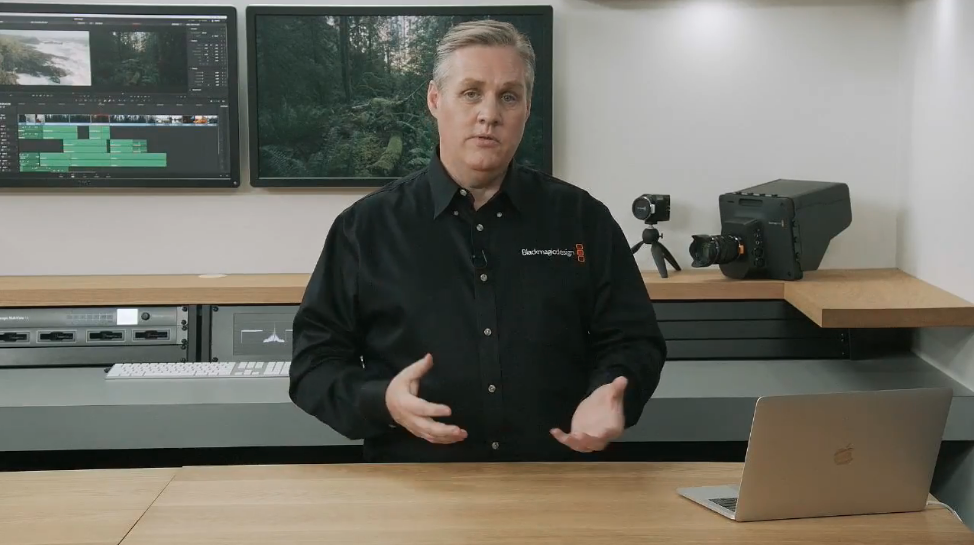Today, Blackmagic Design took the opportunity to live stream their new 2018 broadcast product updates. On-screen Blackmagic CEO, Grant Petty, showed off a number of new broadcast products. Most notably the URSA Mini Broadcast camera as well an SMPTE Fiber solution for broadcasters. Blackmagic also updated their ATEM Broadcast Switcher and a free update for ATEM 2 M/E Broadcast Studio 4K users to the new ATEM 4 M/E Broadcast Studio 4K

SWITCHER
Updating to help broadcasters embrace 4K a little bit easier and the new model looks very much like the DaVinci Resolve Mini and Micro panels. The new modern design has feet for tabletop usage and is easily rack mounted. The rear of the panel Blackmagic has kept this new switcher simple with two ethernet connections, AC and DC power connection and USB-C port. The panel has a new button design full-color LCD panel for each button. This allows different characters and languages within the new full-color LCD panel which will be good for Chinese and Japanese users. Overall, the idea behind the new switcher is to be a faster and easier to use switcher allowing more creativity and control for users.
ATEM 4 M/E Broadcast Studio 4K
Going with the new switcher is the ATEM 4 M/E Broadcast Studio 4K which allow 20 12G/SDI inputs allowing for 60fps in all 20 inputs. Yes, you can use this panel without the new Switcher, but Grant Petty says the software might be a little bit much to use only on a computer and not with the help of the new Switcher. This ATEM also comes with 4 keyers per M/E that equal 16 chroma keys. This new ATEM is priced at $5,995. Blackmagic is offering original ATEM 2 M/E panel to 4 M/E Upgrade for free.
Blackmagic URSA Mini Broadcast Camera
Cameras for broadcast tend to use strange recording formats with varying recording medium. With this new camera Blackmagic is trying to bridge the gap between the broadcast and film world. This camera is based on the URSA Mini Pro but with a smaller sensor to allow ENG style B4 lenses which are a global broadcast standard. Interestingly enough, Blackmagic used the USRA Mini Broadcast camera for the live stream so if you watched the live stream you watched the camera in use.
This is really two cameras in one; you can use it as studio production camera or a field production camera. This camera has the same ND filters as the USRA Mini Pro where the filters also control IR pollution too. If you have used the URSA Mini Pro then the URSA Mini Broadcast will look and feel very familiar. This new camera has the same operating system and user interface which is one of the better camera menu systems. 4K on a smaller sensor… makes me wonder what the sensor’s sensitivity will end up. The price will be $3,495 and the camera is ready to ship now.
Broadcast Fiber for Camera and Studio
Blackmagic wanted to update past the limitation of SDI by making SMPTE Fiber connections for both the camera end and the control room end. This will give broadcasters up to 2KM of cabling distance which is quite a long distance. The camera end fits on the back of the URSA Mini Broadcast. With one single cable, Blackmagic gives users video, talk back, and power.
My opinion here, as someone who has worked in Broadcast for years Blackmagic has an uphill battle to convince American Broadcasters to leave the comfort of Sony and Panasonic to adopt their new equipment.
